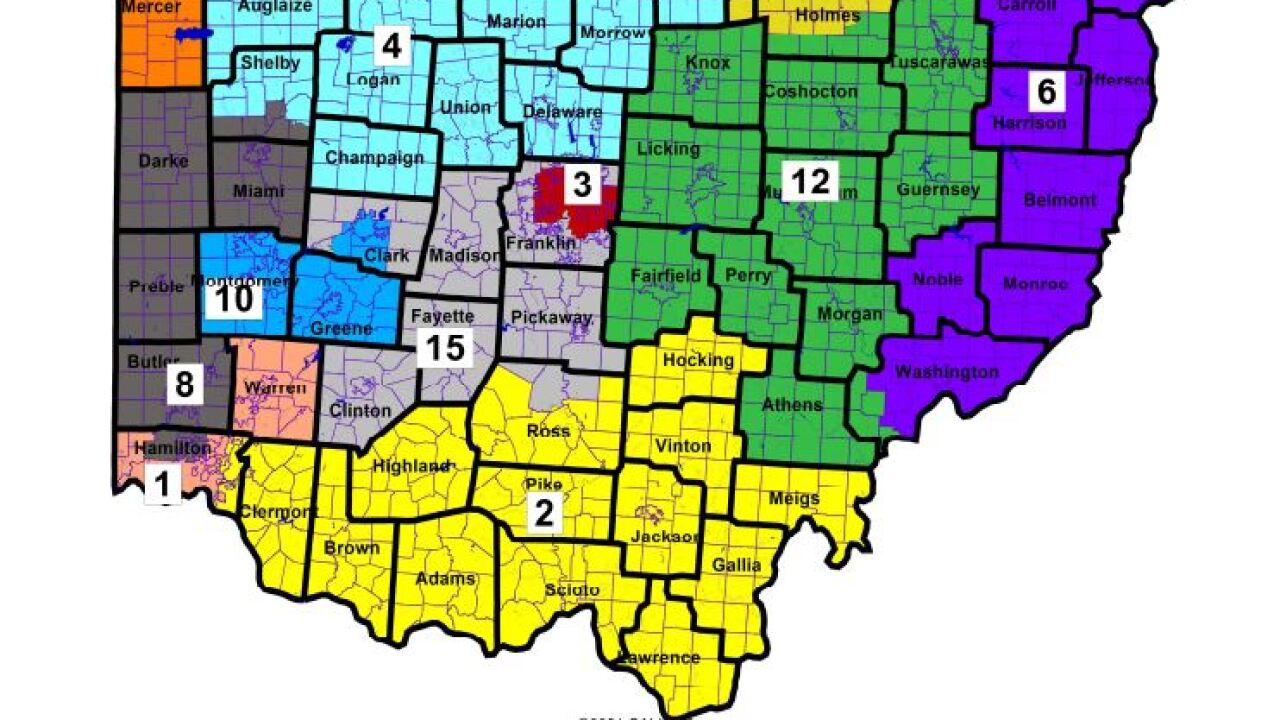COLUMBUS, Ohio — The Ohio Redistricting Commission could be heading back to the drawing board.
The Ohio Supreme Court heard oral arguments Wednesday for three cases filed against the Commission regarding the newly passed General Assembly district maps. The lawsuits accuse the Commission of drawing up illegal gerrymandered maps that did not comply with regulations passed by voters in 2015.
Those regulations were intended to reform the redistricting process and prevent gerrymandering. Gerrymandering is the practice where districts are drawn up to favor one class or political party.
“The Commission was to act in the open. Information was not shared among the Commission and the public was not involved to the extent the new Article 11 required,” said Freda Levenson, representing the League of Women Voters of Ohio.
A big question was whether the commission needed to follow Article 6, which deals specifically with gerrymandering.
The article reads:
The Ohio redistricting commission shall attempt to draw a general assembly district plan that meets all of the following standards:
(A) No general assembly district plan shall be drawn primarily to favor or disfavor a political party.
(B) The statewide proportion of districts whose voters, based on statewide state and federal partisan general election results during the last 10 years, favor each political party shall correspond closely to the statewide preferences of the voters of Ohio.
(C) General assembly districts shall be compact.
The plaintiffs argued the Commission made no attempt to do so.
“Republicans attempted to get as many seats as possible that Democrats could stomach and sign off on. That at best was what was attempted. Not to comply,” said attorney Ben Stafford, who represented Bria Bennett.
However, attorney Phillip Strach who represented Senate President Matt Huffman and House Speaker Robert Cupp, argued Article 6 does not necessarily have to be met, based on language in the regulations, and that the Commission did negotiate to create fair political districts.
“Drawing districts, adopting plans like this is hard work. It’s hard work. You’re talking about 132 districts that have to be based on geography,” said Strach.
Strach said the maps passed had less Republican-leaning districts than other proposed maps. And that the maps fell within the lines of political party favor in statewide elections.
He said the plans passed were, “the most Constitutionally compliant of all the plans the commission considered.”
“I think it’s egregious here in Hamilton County, I believe it’s also egregious up in the Cleveland area, Akron,” said Eric Kearney, former Senate Minority Leader.
Kearney said you can see the gerrymandering in those areas, specifically when it comes to concentrating the black vote. He said doing that can lead to less diverse leadership and representation in state government.
“When you concrete black votes into one particular area it doesn’t allow for diverse input in other areas," he said.
Kearney encouraged people to take a look at the maps and consider how they affect their neighborhoods.
“There is power in the manner in which districts are drawn,” he said. “(Ask yourself,) is what we have now, what they have proposed, is it far? And by fair I mean, does it give people an opportunity to participate fully in the let voting process?” Kearney asked.
It’s unclear how long it’ll take for the supreme court to return a ruling. If it sides with the plaintiffs, the Ohio Redistricting Commission will need to re-draw the maps.




